Description
In the days before modern woodworking machinery, the broad axe was one of the most
important tools in the construction industry. It was used to hew logs into the timbers that
would make up the main frame of buildings. Generally the log was elevated slightly off the
ground and the bark removed. Then a straight line would be marked along the length of
the log indicating where it was to be cut. Then another type of axe was used to cut at right
angles to this line approximately every 6″ or so. The person using the broad axe would
then stand atop the log and chop with short strokes with the grain along the line. The
perpendicular cuts would allow the waste pieces to fall off and the axe to continue along
the line. This process would be repeated four times, once for each side, resulting in a
rectangular timber. The broad axe is easily distinguished from other types of axes
because it is pretty much flat on one side, with the ferrule and any edge bevel being on
the side left to the waste side of the line. This allowed the blade to follow the line instead
of being deflected. Broad axes are often incorrectly labeled as executioner’s axes
because of their large size. While they would probably be effective in this role, there are
thousands of broad axes for every genuine executioner axe. The famous executioner axe
in the Tower of London was probably originally a broad axe, as it is beveled on one side
and has the other side entirely flat. The example being offered in this listing is of simple
crude manufacture, with the blade being formed of one piece of iron and the ferrule
another; formed around a mandrel and forge-welded to the blade. The forward side of the
ferrule is left open to keep the construction simple. Blade is about 9″ long, with a slightly
convex 6″ cutting edge. Large ovoid ferrule to accommodate a roughly 2″ by 2 ½” thick
shaft. Weight is nearly 7 pounds, making this impractical for battle or execution, but an
appropriate weight for use as a hewing axe. Pitted overall with a small hole rusted
through on one side of the ferrule.

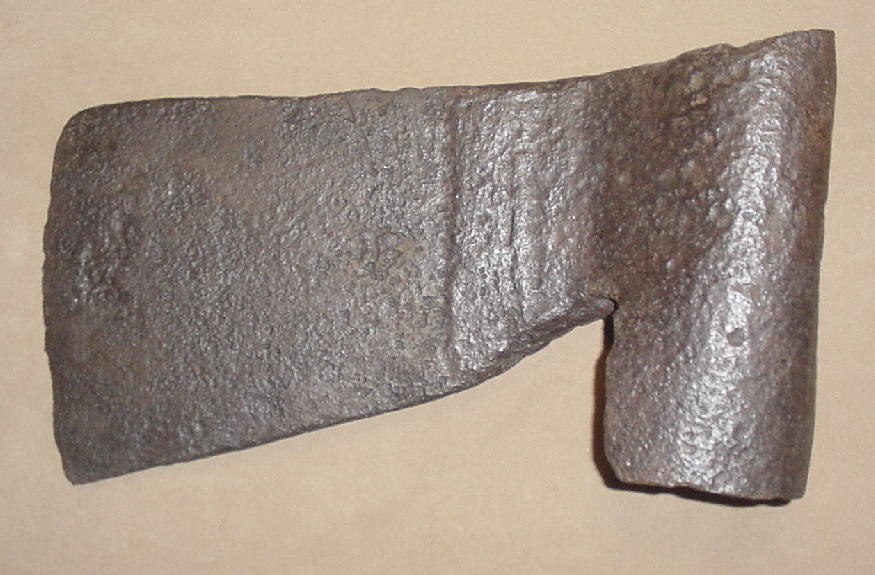
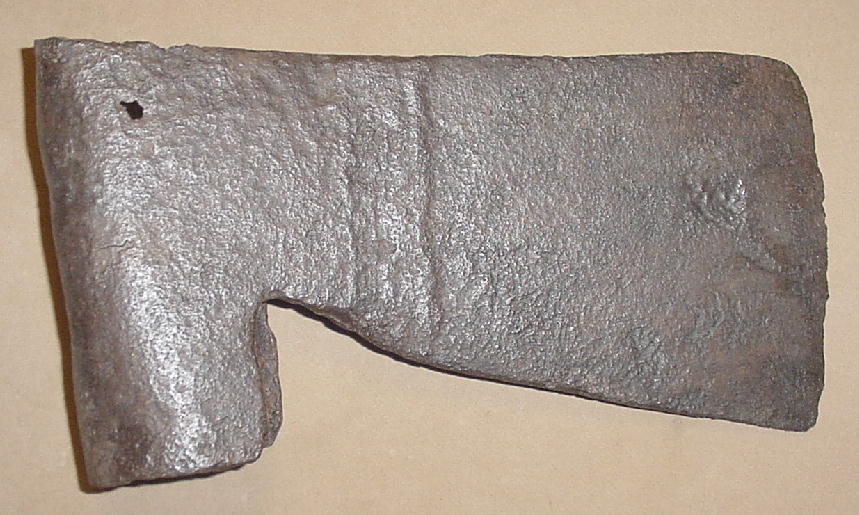


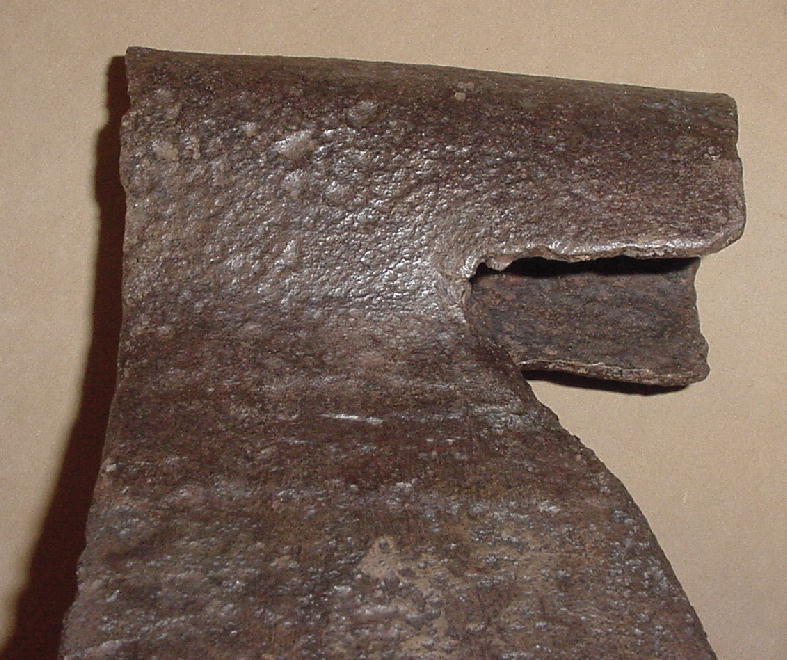
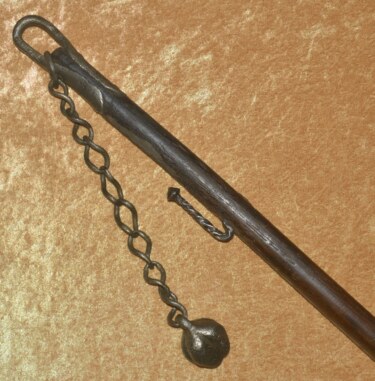 Rare Eastern European Horseman’s Flail, 17th C
Rare Eastern European Horseman’s Flail, 17th C 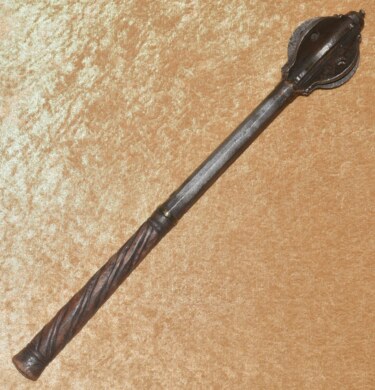 Polish/Hungarian Mace, 17th C
Polish/Hungarian Mace, 17th C 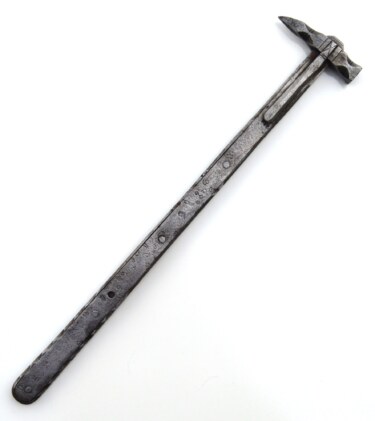 Late Gothic Warhammer, Last Quarter 15th C, Probably German
Late Gothic Warhammer, Last Quarter 15th C, Probably German 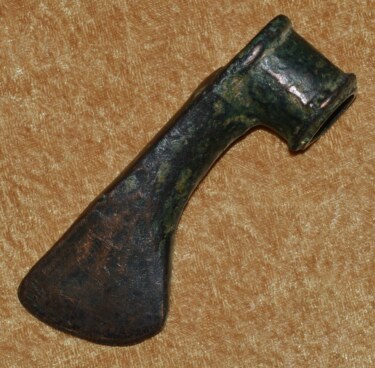 Bronze Age Axe Head, Western Asia, 2nd Millennium BC
Bronze Age Axe Head, Western Asia, 2nd Millennium BC